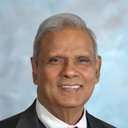Comparison of anticoagulant and anti-inflammatory responses using enoxaparin versus unfractionated heparin for transesophageal echocardiography-guided cardioversion of atrial fibrillation.
Klíčová slova
Abstraktní
The Assessment of Cardioversion Using Transesophageal Echocardiography (ACUTE) II study compared enoxaparin with unfractionated heparin (UFH) as bridging therapy in patients with atrial fibrillation >2 days in duration who underwent transesophageal echocardiography-guided cardioversion. In the present study, the anticoagulant and anti-inflammatory effects of enoxaparin and UFH were compared at prespecified time points. In a randomized substudy of 155 patients from 17 clinical sites, the anticoagulant activity of enoxaparin (n = 76) was compared with that of UFH (n = 79). Blood samples were drawn at enrollment, on day 2, and on day 4 in the 2 groups. Blood samples were evaluated for anticoagulant activity by measuring the activated partial thromboplastin time, anti-Xa, anti-IIa, and tissue factor pathway inhibitor levels. In addition, levels of coagulation activation (by thrombin antithrombin complex) and inflammation (by highly sensitive C-reactive protein) were measured. The results of this substudy showed that the anti-Xa levels in the 2 groups increased on day 2. Similar increases in anti-Xa were observed on day 4. The anti-Xa levels and tissue factor pathway inhibitor levels were higher in the enoxaparin group compared with the UFH group on days 2 and 4. However, as expected, the anti-IIa levels in the UFH group were higher. In addition, markers of coagulation activation and inflammation were increased in patients with atrial fibrillation. Treatment with enoxaparin significantly decreased thrombin antithrombin complex levels compared with treatment with UFH. Highly sensitive C-reactive protein levels were also decreased after treatment in the 2 groups. In conclusion, the ACUTE II study showed that the use of enoxaparin for bridging therapy in patients with atrial fibrillation who underwent transesophageal echocardiography-guided cardioversion resulted in a more predictable and stronger anticoagulant response than that observed with UFH. Markers of inflammation were also decreased in the 2 groups.


